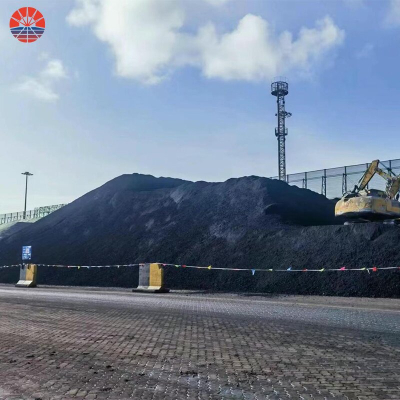Energy Argus Petroleum Coke
Petroleum coke (petcoke) is used in various industrial applications due to its high carbon content and energy value. Some of the primary uses of petroleum coke include:
Fuel in Power Plants: Petcoke is used as a fuel source in power plants, either alone or in combination with other fuels like coal or natural gas. It is burned in boilers or furnaces to produce steam, which drives turbines to generate electricity.
Cement Production: Petcoke is used as a fuel and a source of carbon in cement kilns. It provides high heat during the clinker-making process, reducing energy costs and enabling the production of cement.
Steel Industry: Petcoke is used in the steelmaking process as a source of carbon. It acts as a reducing agent, helping to convert iron ore into molten iron in blast furnaces.
Aluminum Industry: Petcoke is utilized as a carbon source in the production of carbon anodes, which are essential components in the aluminum smelting process. The anodes conduct electricity during the electrolytic reduction of alumina to aluminum metal.
Brick and Glass Manufacturing: Petcoke can be used as a fuel in brick and glass kilns, providing heat for the production of bricks and glass products.
Refractory Industry: Petcoke is used to manufacture refractory bricks and other materials used in high-temperature industrial applications, such as furnaces and kilns.
Production of Calcined Petroleum Coke: Calcined petroleum coke is produced by heating petcoke at high temperatures to remove volatile components and increase its carbon content. It is used in specialized applications, including carbon anodes for aluminum smelting and in the production of graphite electrodes for the steel industry.
While petcoke has several industrial uses, its usage has raised environmental and health concerns due to its high carbon intensity and emissions of greenhouse gases and other pollutants. As a result, some regions and countries have imposed regulations and restrictions on the use of petcoke to mitigate its impact on the environment and human health. The demand for cleaner and more sustainable energy sources is leading industries to explore alternative fuels and carbon sources that have lower environmental footprints.
Petroleum coke production process
Petroleum coke, often abbreviated as petcoke, is a carbon-rich solid material that is a byproduct of the oil refining process. It is produced through the following steps:
Oil Refining: The production of petcoke begins with the refining of crude oil. Crude oil is a complex mixture of hydrocarbons, and the refining process involves the separation and conversion of these hydrocarbons into various valuable products, such as gasoline, diesel, jet fuel, and others.
Vacuum Distillation: During the refining process, a portion of the crude oil is subjected to vacuum distillation in a vacuum distillation tower or column. This process is conducted at reduced pressure, which lowers the boiling point of heavy hydrocarbons, enabling their separation without excessive thermal cracking.
Residue Conversion: The vacuum distillation produces a residue known as vacuum distillation residue or vacuum residue. This residue contains high concentrations of carbon, as well as other impurities and heavy hydrocarbons that are not suitable for further processing into lighter products.
Delayed Coking: The vacuum residue is then further processed through a high-temperature thermal cracking process known as delayed coking. In this process, the vacuum residue is heated to extremely high temperatures (usually around 900 to 930°C or 1650 to 1700°F) in a specialized coking drum or unit.
Coking Reactions: Inside the coking drum, the high temperatures cause the heavy hydrocarbons in the vacuum residue to undergo thermal decomposition or coking reactions. As a result, the hydrocarbons break down into lighter hydrocarbons, leaving behind a solid carbonaceous material known as petroleum coke.
Coke Formation and Quenching: The coke formation process takes several hours to complete, during which the liquid hydrocarbons are driven off, and the solid coke structure is formed. Once the coking process is complete, the hot coke is quenched with water or air to cool it rapidly and prevent further coking reactions.
Coke Removal: After cooling, the solid petroleum coke is removed from the coking drum and transported for further processing or utilization in various industrial applications.
It's important to note that the properties of petroleum coke can vary depending on the crude oil feedstock and the coking process parameters. The quality of petcoke is classified based on its carbon content, sulfur content, and other characteristics, and it is used in various industries, including cement, power generation, steel, and aluminum production. However, due to environmental and health concerns associated with its combustion, there is growing interest in exploring cleaner and more sustainable alternatives to petcoke in some applications.












